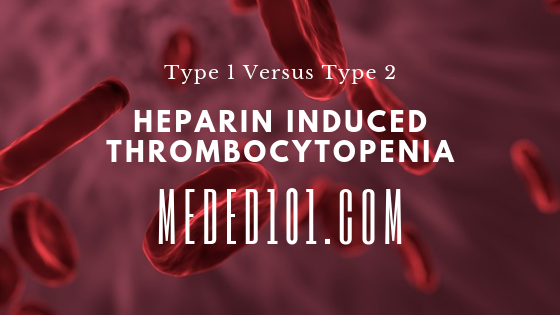As a healthcare professional, when I hear the term heparin-induced thrombocytopenia (HIT), I get nervous. The classically taught heparin-induced thrombocytopenia (type 2) is very serious. HIT is something that needs to be closely watched for because consequences from it can include life-threatening thrombosis.
Type 1 heparin-induced thrombocytopenia is considered less serious. Type 1 HIT involves a drop in mild drop in platelets. Let’s break down some clinical differences to help you understand how to better identify HIT 1 versus HIT 2.
Heparin-Induced Thrombocytopenia – Timing
The onset of a drop in platelets is a really good indicator of what type of HIT you are dealing with. The drop in platelets will happen within the first few days for the less serious HIT Type 1. The drop in Type 1 would be of similar timing for antiplatelet medications. For the more serious HIT (type 2), the onset will typically occur in the 5-14 day range. It helps me to remember that it takes a while to form antibodies and this is a primary reason why it has a delayed onset. Type 1 HIT has nothing to do with antibodies.
Monitoring Platelets
The other signal that can indicate you are dealing with HIT type 2 will be the more significant drop in platelets. In type 2, platelets will typically drop well below 100,000/microL.
HIT Type 2 – Symptoms
Lastly, if you identify that a patient may have a blood clot with their thrombocytopenia, this is 100% indicative of type 2. In type 1, thrombosis is not a potential complication.
Hopefully, this helps give you a quick reference as to what to look out for if you have a patient on heparin. Heparin-induced thrombocytopenia (type 2) is very rare (1-2% occurrence), but it is very serious and we need to identify it as quickly as possible! Onset, the intensity of the thrombocytopenia, and recognition of symptoms will help you identify type 1 versus type 2 HIT.
- 30 medication mistakes PDF
- 18+ Page Drug Interaction PDF
- 10 Commandments of Polypharmacy Webinar based on my experiences in clinical practice



0 Comments